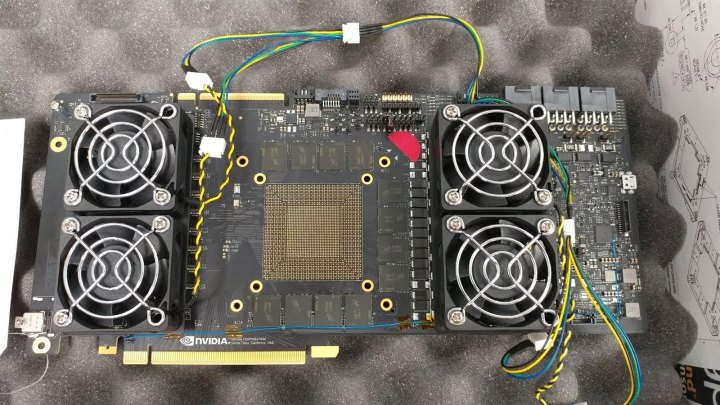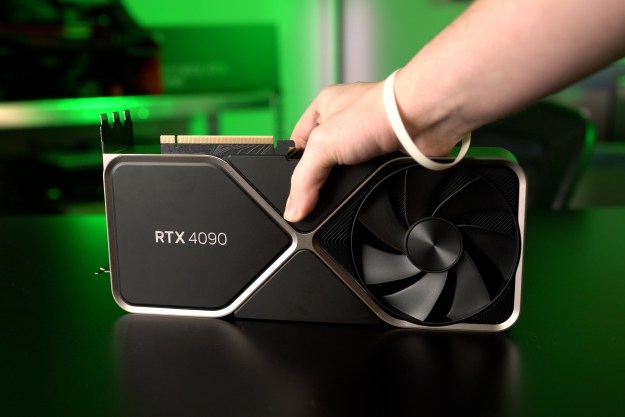
An image of what appears to be an Nvidia prototype graphics card has thrown more fuel on the fire of gamers everywhere who are still hoping for a next-generation Nvidia GPU before the end of the year. While it lacks a graphics processing core, the card does further back up earlier rumors that suggested GDDR6 memory would play a big role in whatever Nvidia has planned next.
The leaked image of the prototype Nvidia card showed up on Reddit from a user named “dustinbrooks.” While that original post has been deleted, it claimed that the board was an in-development Nvidia graphics card that was undergoing testing. It certainly appears to be a very-much unfinished product with several key aspects of a complete graphics card missing. What it does have though, gives us some intriguing hints about the future.
There are a total of 12 GDDR6 memory chips located around the missing GPU core. TechPowerUp translated their product codes to name them as Micron 8Gbit GDDR6 modules which are rated at a 14Gbps data rate. At 1GB per chip, that would suggest this card has 12GB of GDDR6 memory, though it’s certainly possible that the reverse side also has chips on for an expanded amount. The memory-bus is said to be 384-bit, which is a little wider than the current top-tier GTX 1080 Ti’s 352-bit bus. That, combined with the higher rated-speed of the GDDR6 memory would suggest that this card has a total memory bandwidth of 672 GBps — substantially more than the 1080Ti’s 484GBps.
Speculation about the size of the missing graphics chip suggests it is more likely to be a successor to the GP102 core found in the 1080Ti graphics card than the GV100 which is found in Nvidia’s Titan V and Quadro business-orientated cards.
Other details about the board are interesting, though less likely to make it through to a final card. There are three eight-pin power connectors, which as TechPowerUP highlights, suggests that this is a testing board with a much higher power draw than any kind of consumer card would have. The outcome of tests with this board, could provide the basis for whatever the eventual commercial card ends up being.
If you can’t wait for whatever Nvidia is working on, these are the best graphics cards you can buy right now.
Editors' Recommendations
- Nvidia RTX 50-series graphics cards: news, release date, price, and more
- Graphics cards are selling again, and that worries me
- Gamers are finally buying new graphics cards again
- Why Nvidia’s brand new GPU performs worse than integrated graphics
- No one is buying new graphics cards right now





